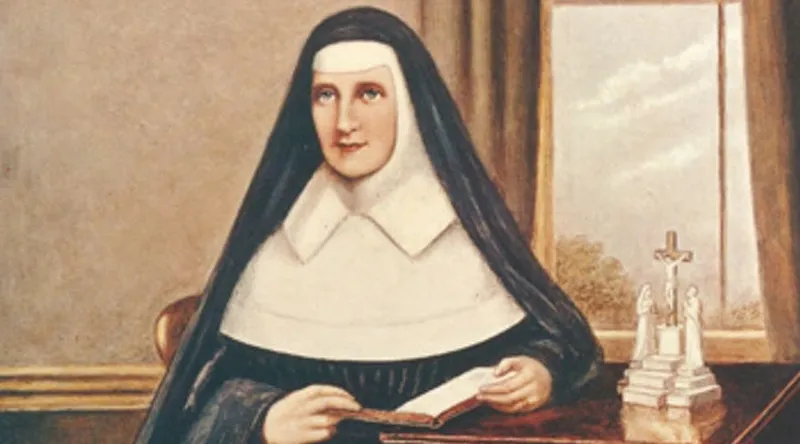Catherine Elizabeth McAuley was born on September 29, 1778, in Dublin, Ireland to Catholic parents, James and Elinor McAuley. Unfortunately, Catherine’s father died in 1783, and her mother died in 1798.
After her parents died, Catherine went to live with various relatives until 1803 when she was adopted by a wealthy elderly couple, William and Catherine Callaghan, who had no children of their own. For the next twenty years, Catherine lived in that house, helping the couple in any way she could. Though the couple was anti-Catholic, both became Catholic before they died, thanks to the example Catherine McAuley showed. Catherine Callaghan died in 1819, and William died in 1822; Catherine McAuley inherited the estate of the couple.
With the money she suddenly found herself with, Catherine built a house to care for homeless women and children. Catherine was joined by other women who shared her vision. To prepare herself to teach the children of the home, Catherine took courses in the latest methods of education. On the feast of Our Lady of Mercy, September 24, 1827, the house opened officially to serve women and children. Catherine and two other women ran this new institution that they called the House of Mercy.
Initially, Catherine did not envision that her work would blossom into a Catholic religious order of women. However, as time went on, Catherine and her little group began taking on the appearance of Catholic sisters. In 1828, a year after the founding of her house, the archbishop gave his permission for Catherine and her staff to wear a distinctive habit in public, such as when they visited the sick. The archbishop also asked Catherine to come up with a name her group would be known; she chose the Sisters of Mercy.
As it became clearer that the group was heading in the direction of become a religious order, Catherine reflected on the type of spirituality would be best for the group. On the one hand, she was attracted to the contemplative life of the cloistered Carmelites, but she was also impressed by the apostolic life of groups such as the Sisters of Charity. So, like most religious orders, she opted to combine both contemplative and apostolic elements.
But unlike most other orders, Catherine’s group did not take vows or have many formal rules. Therefore, this group was working outside the formal structure of the Church. This made many priests and laity frown on their endeavor. One of the arguments they had was that if members of the Sisters of Mercy decided to leave, the poor would suffer.
Catherine did not let the naysayers win, however. Instead, Catherine, along with two other women, Anna Maria Doyle and Elizabeth Harley, did a novitiate year with the Presentation Sisters. When that year was finished, the three women professed vows and returned to the House of Mercy. On December 12, 1831, the three women formally founded the Sisters of Mercy as a religious order. The archbishop appointed Catherine, known in religious life as Mother Mary Catherine, as the Mother Superior.
Over the next ten years, the order flourished, and new convents were formed throughout Ireland. On June 6, 1841, Pope Gregory XVI formally approved the order.
On November 11, 1841, Mother Mary Catherine died at the age of 63 from tuberculosis in Dublin. She was proclaimed Venerable by Pope John Paul II in 1990.
Today, the Sisters of Mercy are found throughout the world serving those in need.


